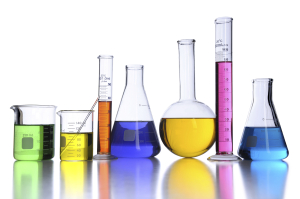 Learn about the chemical resistance of elastomers used in industrial rubber products.
Learn about the chemical resistance of elastomers used in industrial rubber products.
Clyde Sharpe
General Manager of Elasto Proxy
Rubber products such as seals, gaskets, and hoses are used with many different chemicals. Contact between a rubber product and a chemical can be continuous or intermittent, and may occur at high or low temperatures. For technical buyers and product designers, it’s essential to choose an elastomer that provides the right amount of chemical resistance. It’s also important to understand that other factors, such as chemical concentration and operating temperature, can determine whether a specific rubber is right for your application.
What Is Chemical Resistance?
Even the strongest materials have a limited range of applications. For example, stainless steels are strong enough for pressure vessels and process piping, but can dissolve in high enough concentrations of hydrochloric acid. The dissolution of a material in the presence of a chemical indicates its solubility. If an elastomer exhibits strong chemical resistance, then it has low chemical solubility. Conversely, if a rubber has poor chemical resistance, then the elastomer is highly soluble. But what does “solubility” mean outside the laboratory and in the field?
Let’s look at a real-world example involving a rubber seal for 2’ x 2’ access door on a diesel fuel tank. Several years ago, a gasket fabricator ordered nitrile rubber (Buna N) from an overseas supplier, but received a material that lacked sufficient fuel resistance. The custom gaskets were fabricated correctly and installed properly, but lasted only two weeks in the field. The splash of diesel fuel caused the rubber seals to disintegrate, and the elastomer’s solubility (lack of chemical resistance) sent small pieces of material through the fuel line, which clogged the engine.
Who Says That Rubber Is Chemically Resistant?
As the fuel-tank door seal example shows, it’s essential to use rubber materials that are chemically resistant. As a technical buyer or a product designer, you must be able to trust your custom fabricator during compound selection. Otherwise, you may receive parts made of a rubber that’s not right your application. As a custom fabricator, you must be able to trust your own supplier. Otherwise, the rubber you order may not meet your customer’s requirements. The entire supply chain must add value, but the custom fabricator is a critical link between the material supplier and the end-user.
Many companies in the rubber industry publish chemical resistance charts, and Web-based material selection tools are commonly available. Some suppliers simply indicate whether or not a rubber material provides chemical resistance to a specific chemical. Other companies use lettered ranking systems that indicate whether an elastomer’s chemical resistance is excellent, good, or fair – or if the rubber is not recommended for use with a specific chemical at all. How much information do you need? Also, do you need a rubber that’s chemically resistant according to a specific standard, such as ASTM D471-12a?
Chemicals, Concentrations, and Environment
Specificity involves indicating which chemical or chemicals a rubber product will contact. Typically, this is application-specific. For example, if you’re in the food equipment industry, you may need a rubber seal that can resist both beet sugar liquids and vegetable juice. If your application is automotive parts, you may need rubber hoses that can resist antifreeze or rubber gaskets that can resist gasoline. Remember, too, that there are chemical differences in fuel blends. If your application involves biodiesel instead of diesel fuel, will a rubber gasket made of Buna N still provide the right amount of chemical resistance?
Chemical concentration and environment are essential considerations, too. For example, neoprene seals provide different amounts of chemical resistance to a 10% solution of hydrogen peroxide than to a 30% solution of hydrogen peroxide. Operating temperature and pressure, duration of chemical contact, and the thickness of the rubber material also matter. A rubber product’s dimensions affect volume swell, an increase in physical size caused by the swelling action of a liquid. So a thicker or thinner rubber seal may be required for your chemical-resistant application.
How Can We Help You?
Do you have questions about chemical resistance and rubber products? Are you looking for a custom fabricator who will listen to all of your requirements, recommend the right solutions, and source elastomers from trusted network of material suppliers? For over 25 years, Elasto Proxy has been supplying sealing and insulation solutions to a wide variety of industries. How can we help you? Contact us for more information, and enjoy this short video about chemical resistance and rubber products.








